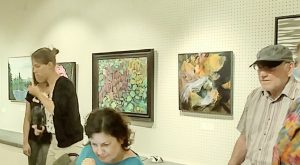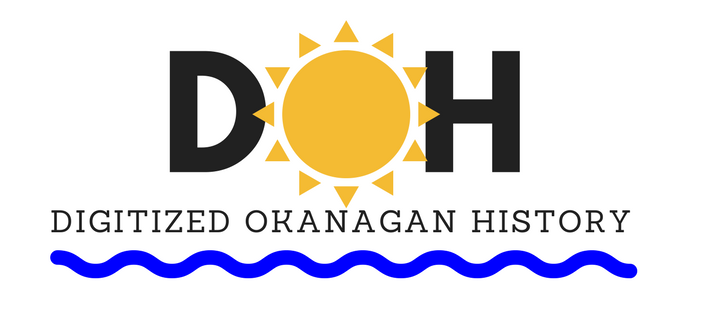
Our project necessarily involves forging relationships with people working in the repositories of the Southern Interior; I enjoy meeting new people when we go off-site to a new museum, and occasionally I meet someone who leaves a lasting impression.
Such was the case when we visited the Armstrong Museum and Art Gallery. Our team (Alex, Emma, me, our leader Paige Hohmann, and UBC Vancouver Archivist Chris Hives) arrived early at the location, so we took time to enjoy an atmospheric cup of coffee at a local haunt. When the museum’s doors opened at 10, we were greeted and ushered into our working area — to my delight, we were to work in the art gallery part of the building.
Next on the agenda for me was meeting Linda Nadon, a woman somewhat my senior, and the local tech expert in charge of the museum’s archival records database. It soon became clear to me that Linda knew her way around the database and that there wouldn’t be too much work for me to do — she took charge of the migration and I was able to leave to work at home after an hour on site! Linda revealed that she was self-educated in archives database management; it was only later that I learned that she had completed an undergraduate degree in biology and a masters in statistics, in addition to other formal education. When I asked Linda what she would say to young women pursuing studies in a technical field, she offered,
My advice is to study anything that interests you, and study a variety of things. You are more likely to end up working at something you are interested in, if that is what you have studied. And a varied background makes it more likely that you can find some sort of work. There are lots of different avenues into technology. You don’t have to have the kind of brain that works best with binary decisions, there are lots of image and sound ways to interact with technology. Even if you intend to dive in deep into structured technology, try balancing this by using the creative side of your brain. I studied art for a few years and I paint and draw. This hobby has helped me with the work I do in our photo archives in the restoration of digital copies of photographs. It also helps me solve problems in a non-linear manner.
As an older person with an Arts background studying computer science, I found Linda’s words inspiring, and am thinking of asking her more about her work with statistics. Thus, our repository visit opened new horizons for me — an outcome I could scarcely have anticipated.
